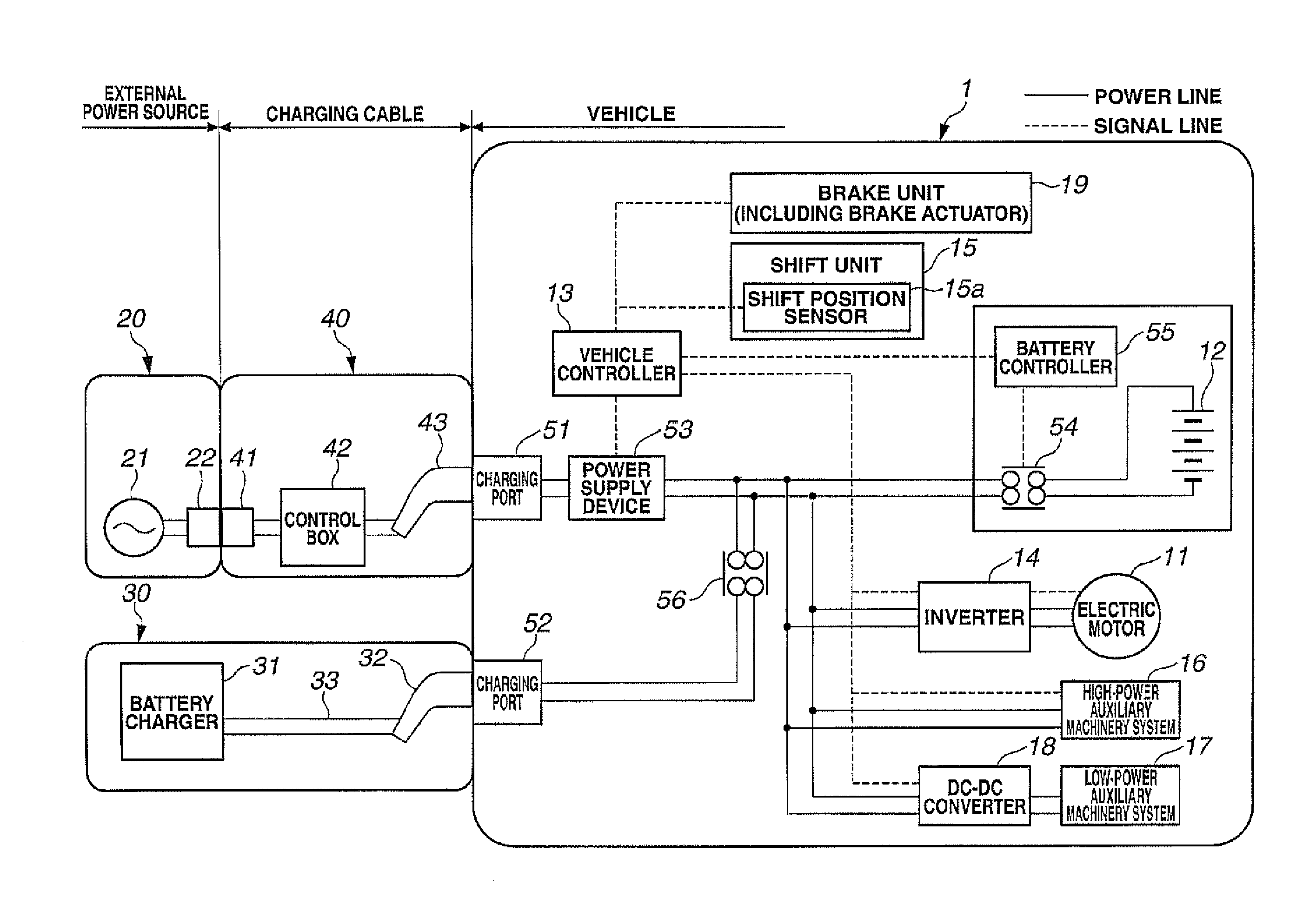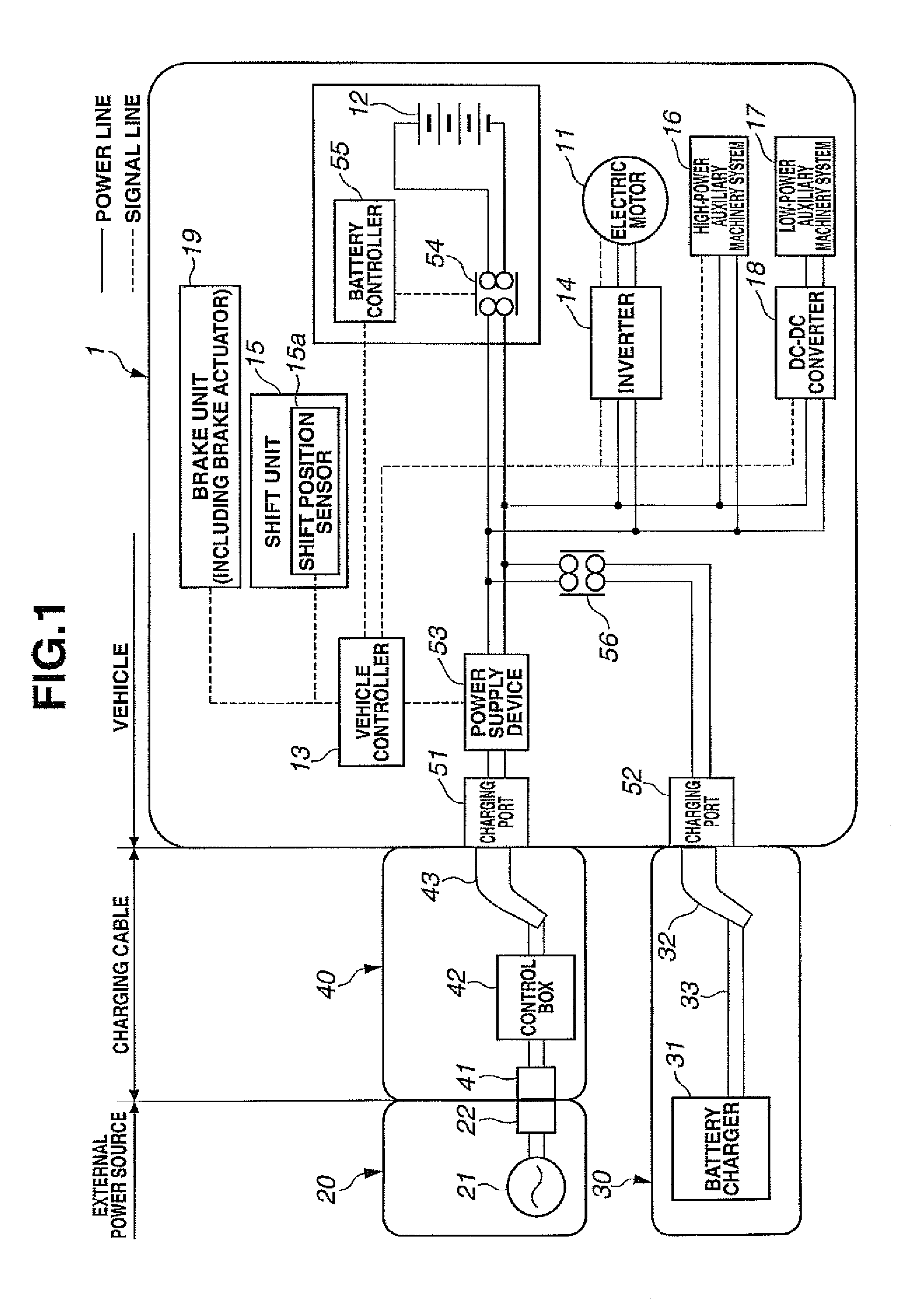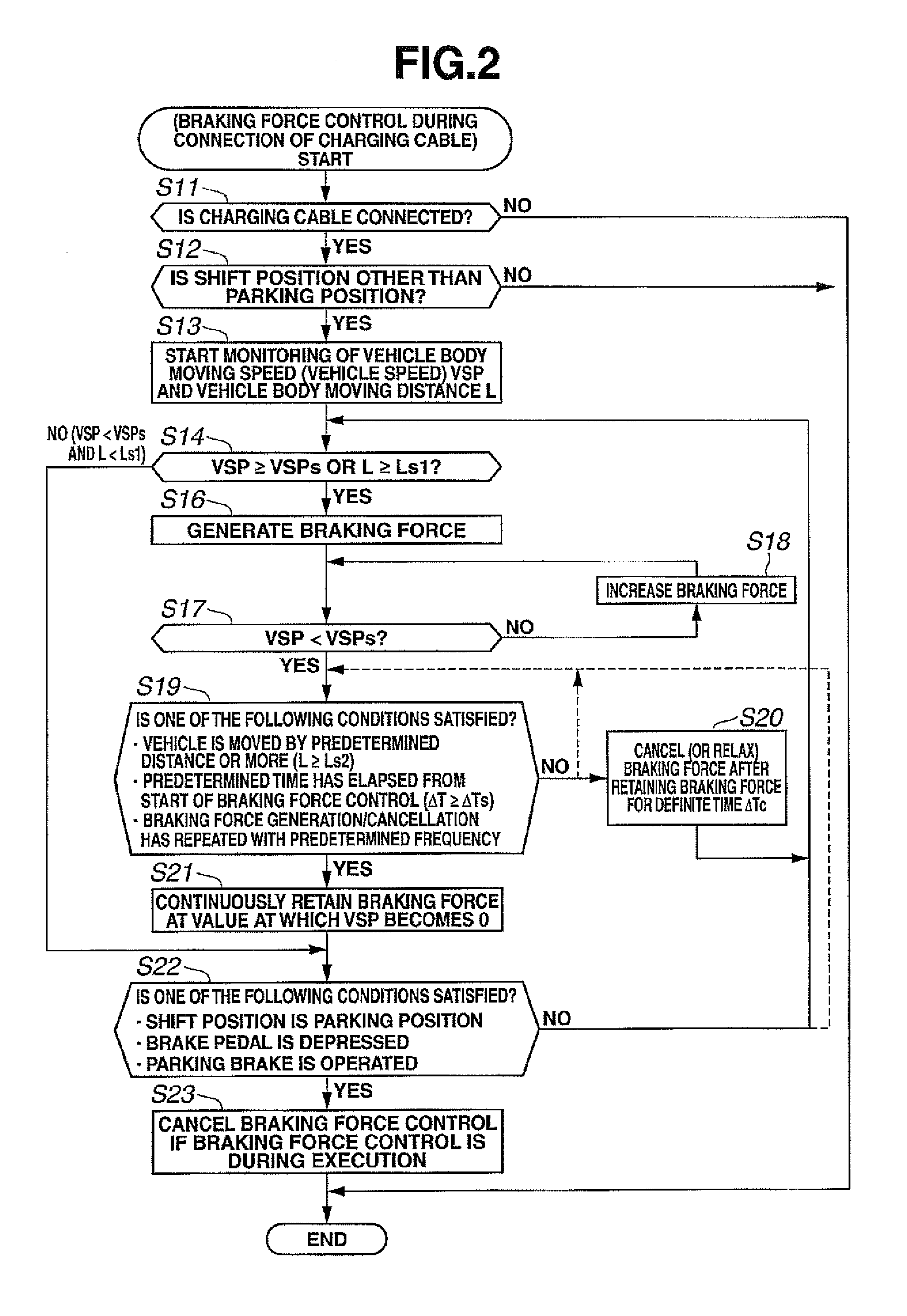Device for restricting vehicle movement during connection with charging cable
a charging cable and device technology, applied in the direction of electric devices, battery/fuel cell control arrangements, instruments, etc., can solve the problems of damage to the charging cable extending between the vehicle and the external power source, and achieve the effect of prolonging the charging time and increasing the charging cos
- Summary
- Abstract
- Description
- Claims
- Application Information
AI Technical Summary
Benefits of technology
Problems solved by technology
Method used
Image
Examples
embodiment 1
Configuration
[0038]FIG. 1 is a schematic system diagram showing a whole control system of electric vehicle 1 equipped with a device for restricting movement of a vehicle during connection of a charging cable, according to an embodiment of the present invention, together with a battery charging system.
[0039]Electric vehicle 1 is equipped with electric motor 11 as a power source which drives road wheels (not shown) so as to allow electric vehicle 1 to run.
[0040]Electric motor 11 is supplied with electric power from high-power battery 12 as an electric power source which is controlled by vehicle controller 13 via inverter 14, and drives the road wheels (not shown) by torque corresponding to the electric power supplied.
[0041]Vehicle controller 13 executes control of the electric power supplied to electric motor 11 via inverter 14 based on a shift position of shift unit 15 which is manually operated by a driver in accordance with a running form, that is, a parking position (P range), a r...
example 1
(a) Operation Example 1
[0097]FIG. 3 is an operation time chart in a case where a driver forgets shifting to the parking position (P range) and exits from the vehicle while holding the shift position other than the parking position (P range), and connects charging cable 40 (33) to charging port 51 (52) to thereby start charging to battery 12.
[0098]Since the vehicle is not shifted to the parking position (P range) in such a case that the vehicle is stopped on a slope, the vehicle is allowed to move by a component of force of gravity so that the vehicle body moving speed VSP is generated, for instance, as shown in FIG. 3.
[0099]The braking force control is started by operating brake unit 19 such that a braking force is generated at instant t2 at which the vehicle body moving speed VSP becomes equal to or higher than the predetermined vehicle speed VSPs (step S14 and step S16). Then, the braking force is increased such that the vehicle body moving speed VSP becomes lower than the predete...
example 2
(b) Operation Example 2
[0117]FIG. 4 is an operation time chart in a case where a driver forgets shifting to the parking position (P range) and exits from the vehicle while holding the shift position other than the parking position (P range), and connects charging cable 40 (33) to charging port 51 (52) at instant t1 to thereby start charging to battery 12.
[0118]Since the vehicle is not held at the parking position (P range), in a case where the vehicle is stopped on a slope, the vehicle is allowed to move by a component of force of gravity so that the vehicle body moving speed VSP and the vehicle body moving distance L are generated, for instance, as shown in FIG. 4.
[0119]The braking force control is started by operating brake unit 19 such that a braking force is generated at instant t2 at which the vehicle body moving distance L becomes equal to or larger than the predetermined distance Ls1 (step S14 and step S16). Then, in the operation example shown in FIG. 4, the vehicle body mov...
PUM
 Login to View More
Login to View More Abstract
Description
Claims
Application Information
 Login to View More
Login to View More - R&D
- Intellectual Property
- Life Sciences
- Materials
- Tech Scout
- Unparalleled Data Quality
- Higher Quality Content
- 60% Fewer Hallucinations
Browse by: Latest US Patents, China's latest patents, Technical Efficacy Thesaurus, Application Domain, Technology Topic, Popular Technical Reports.
© 2025 PatSnap. All rights reserved.Legal|Privacy policy|Modern Slavery Act Transparency Statement|Sitemap|About US| Contact US: help@patsnap.com



